.svg)
DATA PRODUCTS
Democratize data products faster & smarter
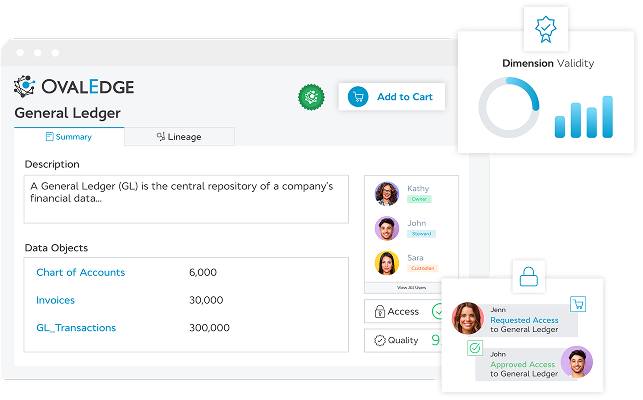
TRUSTED BY CUTTING EDGE COMPANIES
.png?width=512&height=139&name=unnamed%20(8).png)

%20(54).png?width=2000&height=1000&name=Untitled%20(2000%20%C3%97%201000%20px)%20(54).png)
%20(53).png?width=2000&height=1000&name=Untitled%20(2000%20%C3%97%201000%20px)%20(53).png)
%20(51).png?width=2000&height=1000&name=Untitled%20(2000%20%C3%97%201000%20px)%20(51).png)
%20(50).png?width=2000&height=1000&name=Untitled%20(2000%20%C3%97%201000%20px)%20(50).png)

Treating data as a product creates tangible business impact

90%
reduction in new use case implementation timeline

30%
decrease in total costs of technology, development, and maintenance
OVERVIEW
Efficiently manage your data product lifecycle with OvalEdge
Manage the data product lifecycle in a single platform for faster speed-to-market and adoption.
Govern & control
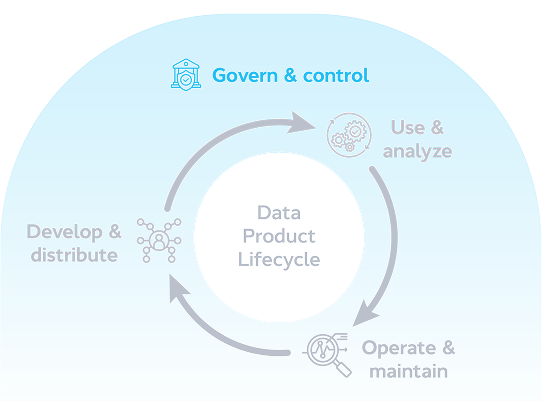
Establish federated governance through customizable controls and automatic policy checks.
Develop & distribute
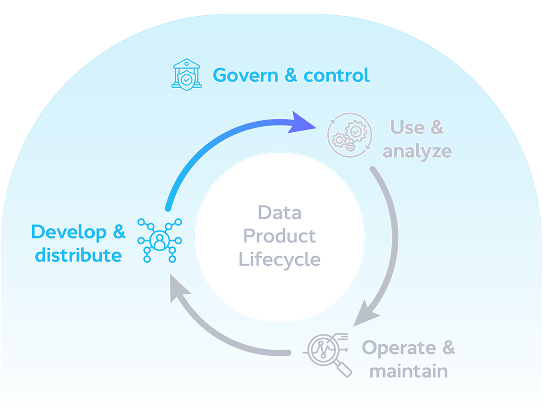
Achieve faster rollout through integrated collaboration and automated certifications, policy checks, & access management.
Use & analyze
.png?width=543&height=415&name=Group%206045%20(1).png)
Search in natural language and analyze with AI to gain instant business insights.
Operate & maintain
.png?width=543&height=415&name=Group%206045%20(2).png)
Maintain data product quality through automated data quality checks and alerts.

Establish federated governance through customizable controls and automatic policy checks.

Achieve faster rollout through integrated collaboration and automated certifications, policy checks, & access management.
.png?width=543&height=415&name=Group%206045%20(1).png)
Search in natural language and analyze with AI to gain instant business insights.
.png?width=543&height=415&name=Group%206045%20(2).png)
Maintain data product quality through automated data quality checks and alerts.
Govern & control
Provide more than data governance, apply controls by implementing out-of-the-box templates, customizable policy configuration, and repeatable training.
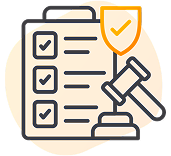
Create
standards
Apply templatized, out-of-the-box policies to enforce standards amongst data products published to the marketplace.

Configure
controls
Customize additional controls and policy checks to satisfy all company standards and expectations for data products.

Provide In -
Depth Training
Offer repeatable training in an easily accessible location to educate data product creators, consumers, and operators of the required policies and standards.
Develop & distribute
Accelerate data product design, development, and distribution by collaborating and validating within a single platform.
Design efficiently
Streamline data product design through clear communication and having a clear view of the data product’s requirements from its inception.

Develop collaboratively
Developers can create new data products with fewer iterations, as requirements, project statuses, and communications are all organized in a single platform.
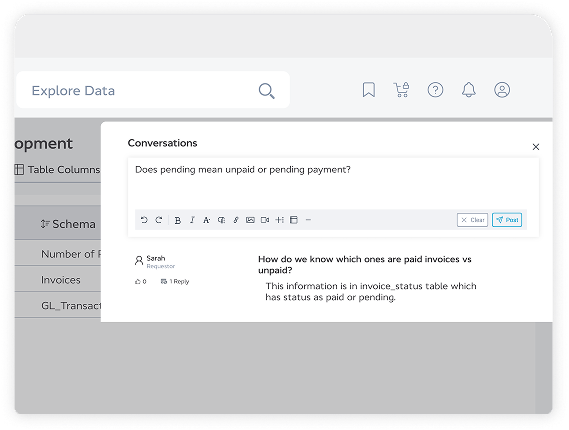
Distribute confidently
Publish high-quality data products that are easily understood by end users.
Curate the data product’s metadata with AI for easy discoverability, apply automatic checks and certifications to ensure high quality, and configure workflows for automated access management.
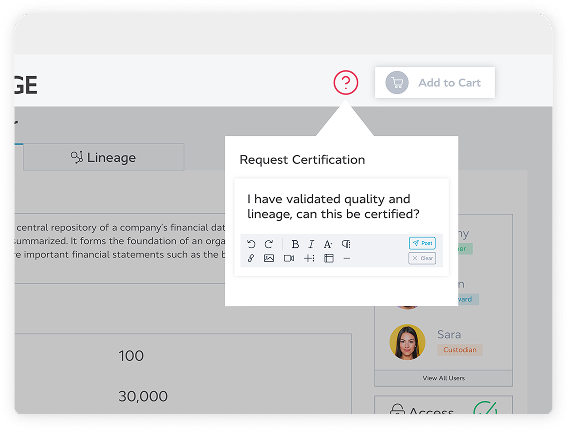
Use & analyze
Don’t just search the marketplace, receive access and immediately gain business insights through AI.
Search & Explore the Marketplace
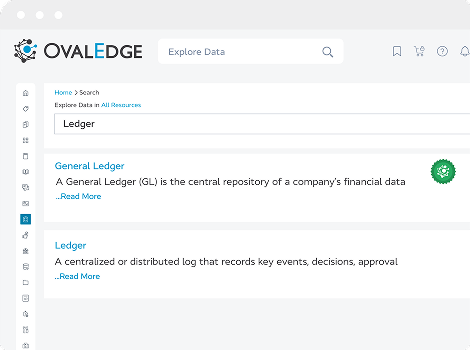
Search the data product marketplace using filters, tags, and quick views to narrow down suitable options.
Determine Suitability Comprehensively
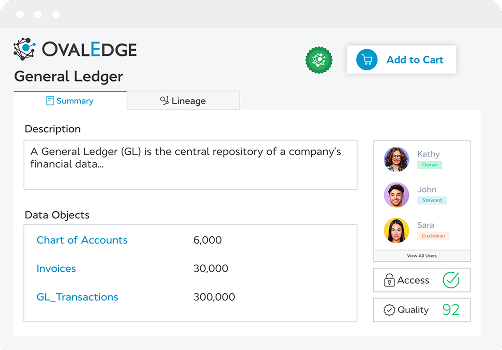
Read and understand the curated metadata through descriptions, lineage, relationships and more. Ask questions and collaborate directly with data product owners.
Request Access or Purchase
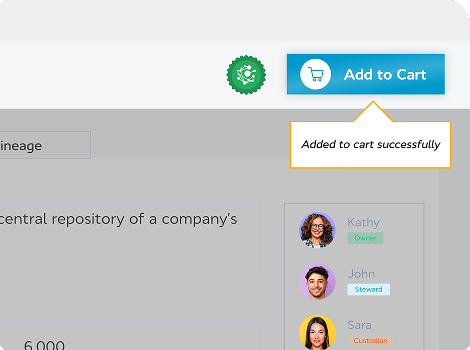
With one click, request access/purchase for the data product. The request routes to the proper individual to approve and fulfill the request.
Leverage Assisted Analysis
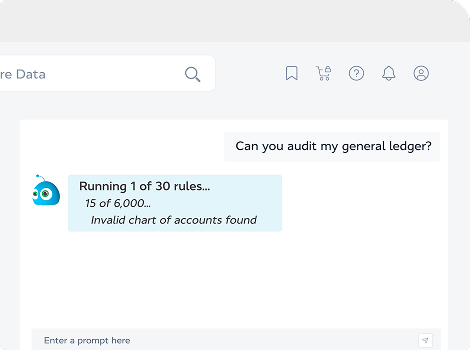
Gain business insights from data products using AskEdgi, OvalEdge’s proprietary AI analysis assistant.

Search the data product marketplace using filters, tags, and quick views to narrow down suitable options.

Read and understand the curated metadata through descriptions, lineage, relationships and more. Ask questions and collaborate directly with data product owners.

With one click, request access/purchase for the data product. The request routes to the proper individual to approve and fulfill the request.

Gain business insights from data products using AskEdgi, OvalEdge’s proprietary AI analysis assistant.
Operate & maintain
Holistically maintain data products with monitoring of data quality, communication workflows, and consumption metrics, all within a single platform.

Automate
maintenance
Execute data quality checks in strategic areas to help monitor and maintain high quality data products.

Communicate
effectively
Ensure the correct users are promptly notified about any operational concerns for their data products.

Manage
retirement
Gather engagement and operational metrics in reporting dashboards to facilitate retirement.
Our Success Stories
Logistics
OvalEdge enabled the client to create a self-service data marketplace where business users can easily discover and request access to certified data products. This has significantly improved data accessibility and usability.
Subject Matter Expert

Consulting
Previously, obtaining access to data was a lengthy and manual process with email and Slack communications that could take weeks. With OvalEdge in place, this process was streamlined, enabling access to be granted in just minutes to over 45,000 employees.
Subject Matter Expert
Frequently asked questions
Do you have any questions about data products?
What is a data product?
A Data Product is a curated, reusable, and well-documented data asset that delivers insights or value to users, similar to a traditional product. It’s designed for a specific use case, with clear ownership, governance, and quality standards.
How is a data product different from a dashboard or report?
A dashboard is a presentation layer of data, while a data product includes the data itself, its logic, lineage, metadata, governance, and access mechanism—all packaged for reuse and scalability.
What are examples of data products in real-world use?
-
Customer 360 view
-
Product recommendation dataset
-
Monthly revenue metrics dataset
-
Churn prediction model output
-
Risk scores for loan approvals
Why is treating data as a product important?
It promotes accountability, usability, and adoption. When data is treated like a product, it has defined owners, quality benchmarks, documentation, and a lifecycle that leads to higher trust and business impact.
Who owns a data product, data team or business team?
Ownership is ideally shared:
-
Business team owns the use case and KPIs.
-
Data team ensures data engineering, modeling, and availability.
Often a data product owner is appointed to manage this intersection.
What are the key roles in managing a data product?
-
Data product owner
-
Data engineer/architect
-
Data steward
-
Data analyst/scientist
-
Business stakeholder/consumer
What is the typical lifecycle of a data product?
-
Ideation
-
Design
-
Development
-
Testing/Validation
-
Publishing
-
Monitoring & optimization
-
Retirement or iteration
How do you ensure continuous improvement of a data product?
By collecting user feedback, monitoring usage metrics, addressing data quality issues, and regularly reviewing the product against evolving business goals.
What should be included in a data product?
-
Business context
-
Dataset/API/model
-
Data definitions & metadata
-
Usage documentation
-
Quality metrics
-
Lineage and versioning
-
Access controls
How do you design a data product with the end-user in mind?
Start with user needs, define clear KPIs, ensure ease of access, document thoroughly, and provide training/support if needed. Usability should be central.
What data quality standards are required for data products?
-
Accuracy
-
Completeness
-
Timeliness
-
Consistency
-
Freshness
-
Traceability
What metadata or documentation should accompany a data product?
-
Definitions of fields
-
Source system
-
Update frequency
-
Owners & stewards
-
Business rules & logic
-
Last modified timestamp
What platforms or tools are used to build data products?
-
Data catalogs (e.g., OvalEdge, Alation)
-
Data warehouses (Snowflake, BigQuery)
-
ETL tools (Informatica, dbt)
-
Visualization (Tableau, Power BI)
-
Orchestration (Airflow)
-
APIs / ML platforms
How do data products relate to data mesh architecture?
In data mesh, data products are the primary unit of value. Each domain team is responsible for creating and managing its own data products as part of a decentralized, federated model.
Can AI or automation be used to create or enhance data products?
Yes. AI can help with data classification, quality checks, anomaly detection, data summarization, and even building pre-trained analytics "recipes" or ML models.
How do you measure the success of a data product?
-
Usage metrics (views/downloads/API calls)
-
Business outcomes (e.g., revenue uplift, cost savings)
-
User satisfaction (surveys, NPS)
-
Data quality improvement
-
Reduced time-to-insight
What challenges limit data product adoption?
-
Poor documentation
-
Low data quality
-
Difficult access or lack of discoverability
-
Misalignment with business needs
-
No training or change management
How do data products drive business decisions?
They provide ready-to-use, trustworthy insights that enable faster, data-informed decision-making—reducing dependency on data teams and speeding up time-to-action.
How to promote data literacy around data products?
-
Embed definitions and context
-
Train users on how to use and interpret
-
Offer internal forums or communities
-
Use metadata and glossary integrations
How do you ensure compliance (e.g., GDPR, CCPA) within a data product?
By classifying sensitive data, masking PII, documenting data usage purpose, implementing consent management, and maintaining audit logs.
What access controls are needed for secure data product usage?
-
Role-based access
-
Attribute-based access
-
Approval workflows
-
Temporary or context-based permissions
How do lineage and traceability apply to data products?
Lineage shows where the data came from, how it was transformed, and who used it, helping with trust, debugging, and audits.
